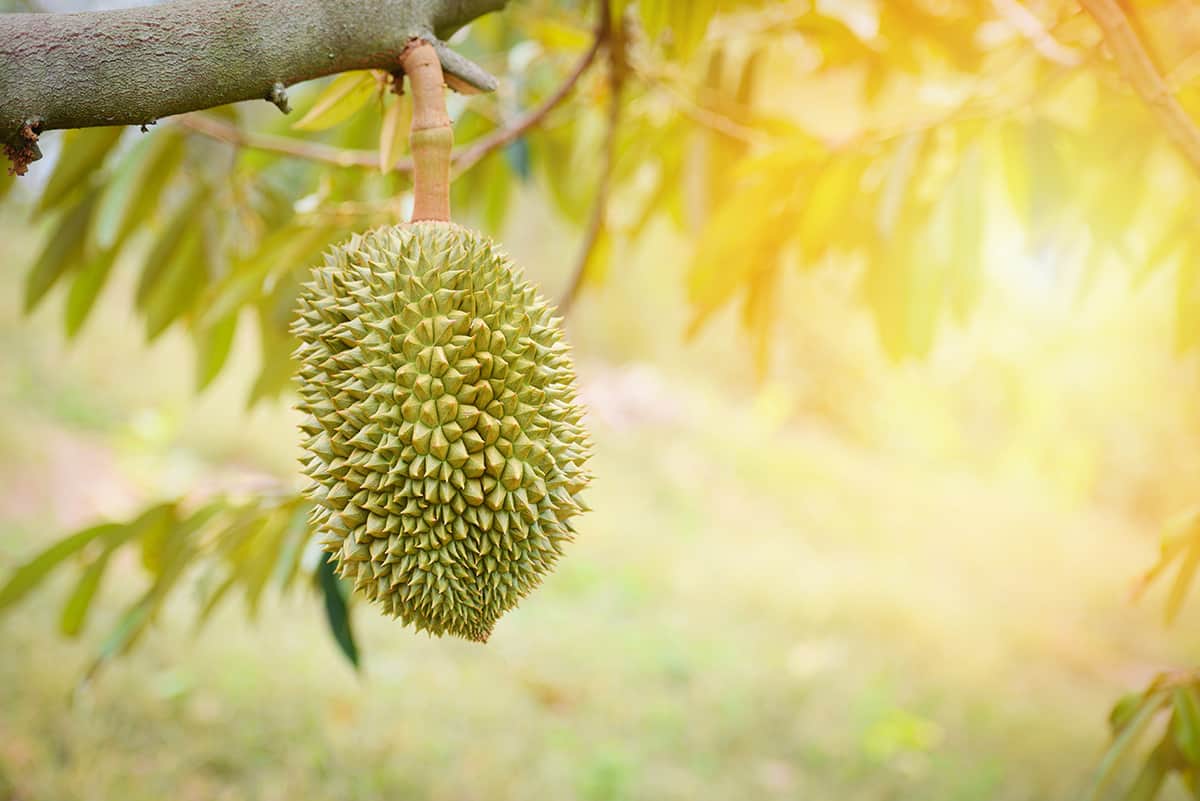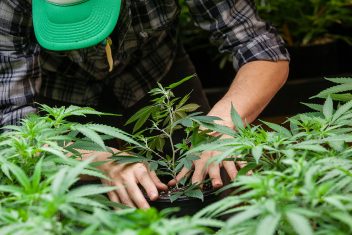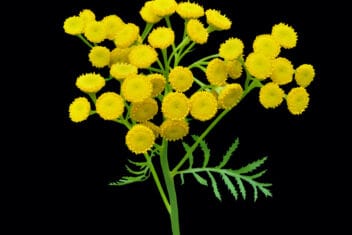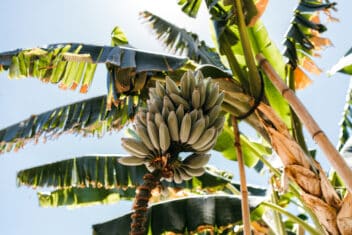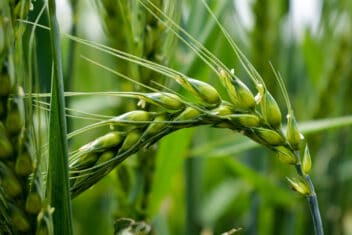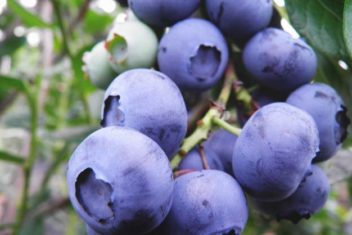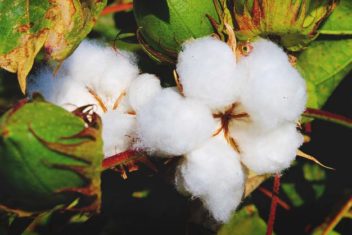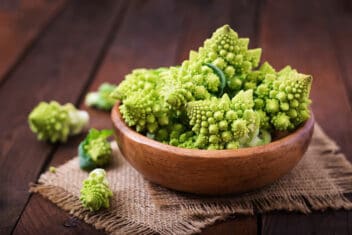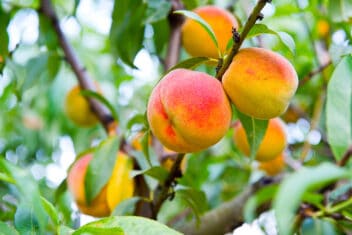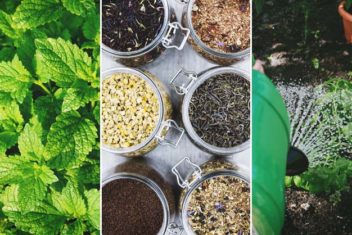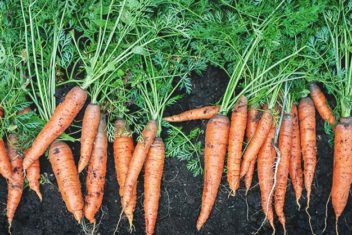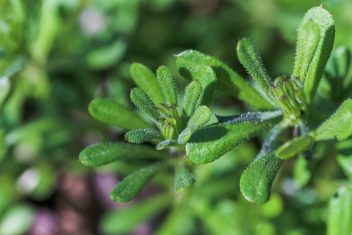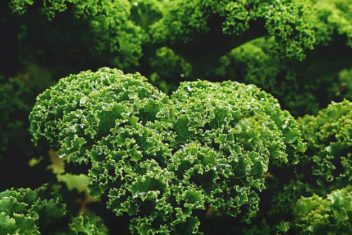When I told my wife I wanted to grow durian, she asked why. Traveling through Asia, there are signs banning durian from public transport, hotels, and other areas. In other words, not everyone is a fan.
Known to smell – um – unpleasant, durian is a polarizing fruit that people either completely love or despise.
Durian is such a unique fruit, and it is often sought after by aficionados. There’s a massive market for this intriguing treat, and it’s surprisingly easy to grow if you have the right environment. It’s also one of those trees that is absolutely laden with fruit, which is a boon whether you eat it or sell it.
What is Durian?

Known by fans as the king of fruits, durian (Durio zibethinus) is beloved in countries like Thailand, the Philippines, Malaysia, and Indonesia. It has a creamy, sweet flavor, though you have to get through the pungent odor to enjoy it.
Durian has a hard external husk with five oval segments inside that contain the creamy flesh and seeds. Durian is related to breadfruit, and it shares its love of sun and heat. It’s a truly tropical tree.
Native to Borneo and Sumatra, durians love super-hot environments that are also extremely humid. In the wild, durian trees grow up to 120 feet and live for a couple of centuries. Grafted varieties are more compact but still produce individual fruits that are up to 18 pounds in weight. There are hundreds of named varieties.
If you’ve never tasted or smelled durian, it’s quite an experience. People describe it as something like Limburger cheese, resin, gym socks, rotten onions, and turpentine combined. It’s so pungent that it is banned in public places in some Asian countries.
But the flavor is a whole different thing. It’s sweet, caramel, savory, and almost creamy. Anthony Bourdain once said after eating it, “your breath will smell as if you’d been French-kissing your dead grandmother.”
How to Plant Durian
You need specific conditions for durian to flourish. Few places in the United States provide the right conditions, but don’t let that stop you from trying. Only you know the intricacies of your area, so if you think you can make durian work, by all means, give it a go.
Durian grows successfully in Hawaii, Florida, Puerto Rico, and similar places, though it hasn’t been grown on a commercial scale anywhere in the US.
To flourish, durian needs consistent temperatures between 75ºF and 85ºF. Any temperatures below 45ºF, your tree will lose its leaves and likely die off. It goes without saying that durian can’t handle any frost.
Durian also loves water. The trees need a minimum of at least 60 inches of rainfall per year but do best with a rainfall of up to 150 inches. Failing those levels, you need to provide supplemental irrigation.
Next is humidity. Anywhere between 70 and 90 percent humidity is required.
Based on all of that, you should weigh whether it’s worth trying to growing durian or not. I was told I couldn’t grow pawpaw in my area, but I planted a tree- and for what it’s worth – it grows a few fruits every year. It also looks great on my property. So never say never.
Planting in the Ground
You can plant seeds either indoors or out. You can simply remove the seeds from the fruit in order to plant them.
You should plant seeds within a couple of days after removal from the fruit. Fresh durian seeds don’t keep much beyond five days, especially if exposed to sunlight. You can buy them online in specially sealed packs that last much longer than a few days.
Dig a hole about 1.5 feet across and deep. Mix soil and compost in equal parts and refill the hole. Take the seed and place it on top of the soil and push it in about halfway, leaving half of the seed exposed to sunlight.
Do this at the hottest and wettest part of the season, and you should see germination within a few days or a week at the most. In the right conditions, durian seeds are swift to germinate.
Water the seed well. Provide shade for the first two years or so, just as if the seed had fallen from a tree in a forest and it is growing on the forest floor.
Starting Seeds Inside
If the environment outdoors isn’t quite right, you can start the seed inside. Start by placing it on a soaked paper towel, and then seal the towel and seed inside a clear plastic bag. This provides heat and condensation – all the things durian seeds crave. Place at a window that receives at least four hours of direct sunlight each day and make sure the bag stays wet.
When the seed has roots growing from it that are longer than the seed itself, plant in a pot filled with top-quality potting mix. Water every day, but make sure the container you use drains very well. Plant half-buried just like an outside seed.
Planting Cuttings
If you know someone with a durian tree, you can take a cutting from it. Choose a branch that is about three feet long and at least two inches in diameter. Plant the cut end directly into the ground. Stake well and water daily for four months.
Soil pH should be between 5.5 and 6.5. Durian trees need rich, loamy soil that drains well. They love water but hate wet feet sitting in moisture.
Caring for Durian
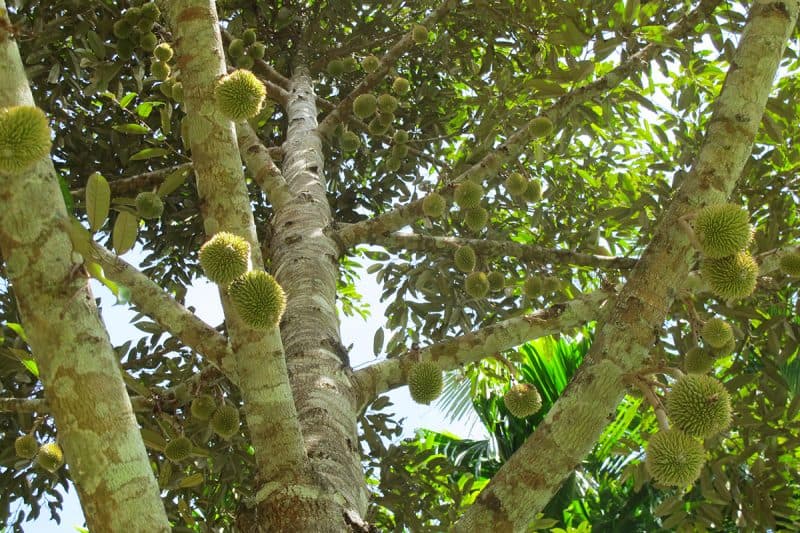
Fertilizer
Use a good quality slow-release fertilizer twice a year. Dig it in after the fruit has been harvested and just before the flowers appear for next time. It will take a couple of seasons for you to work out the timings, especially since the tree generally won’t produce fruit in the first four to five years.
Water
Water daily for the first four months, especially if planting a cutting. After this, water frequently, ensuring the water doesn’t pool at the base of the trunk and roots. The ground should remain moist but not wet.
If the weather becomes dry and the humidity drops, mulch with straw, hay, or similar and water well. Think about a rain forest environment. That’s what you want to reproduce as much as possible.
Pruning
Durian trees grow so tall that pruning should be done in the first one to two years. Prune to shape so that the tree canopy is open in the middle. Aim for a two-pronged shape growing out and up from the main trunk.
As the tree gets older, prune away diseased and damaged branches. If you already have fruit trees, treat durian the same and prune when you prune all the other trees in your orchard.
Spacing
If you plant more than one durian tree, space them between 30 and 50 feet apart. The tree is pollinated by fruit bats, birds, and insects, so the fruit yield is better if you plant more than one tree.
Companion Planting for Growing Durian
A word of warning when it comes to durian. Despite the height of the tree, their roots are extremely shallow. This makes them susceptible to wind. There have been instances when trees have fallen over, so I generally avoid planting anything under a durian tree.
It’s also worth mentioning that you shouldn’t plant directly under durian trees for another reason. The fruit is ready when it drops to the ground and some of the fruit can weigh up to 18 pounds. Durian is solid with a hard, spiky husk. Anything below could get smooshed.
Common Problems and Solutions for Growing Durian
Stem Canker
This is a common disease that impacts many different plants. The symptoms vary depending on the type of plant affected. With durian, the symptoms appear as root rot, fruit rotting before it develops fully, and leaves rotting for no reason.
You usually see chocolate-colored spots appear on leaves and fruit, then they spread before rotting occurs. There is often a sap or sticky substance in the spots.
There are several fungicides that you can use, so I suggest talking to a professional at your local nursery. This is because to manage this disease effectively, and you sometimes need to use several different fungicides at various times.
Root Rot
As the name suggests, this is where the roots rot away, eventually killing the tree. To avoid it, make sure the soil is well-draining, so the roots aren’t sitting in pools of water. This is especially important for durian, given how much they need to be watered.
Leaf Blight
Reddish or yellow spots appear on leaves and spread outwards. This often affects juvenile trees and is caused by a fungus. Use a fungicide, or if the tree is small enough, you can use your own baking soda spray. Use 1/2 a teaspoon in a gallon of water. Mix well and spray on the leaves, covering both front and back sides.
Shot Hole Borer
You may see tiny holes in branches, gumming mixed with a powdery residue. This may or may not be combined with the branch or stem wilting and dying.
This destructive beetle bores into the durian tree, safely tucked away from our chemical and natural treatments. There are chemical solutions to try but check your local laws and regulations. They’ll need to be applied when the insects are outside of the tree, before they bore in.
There may also be specific ways of destroying and removing infected plants.
In some areas this pest is prolific and there are requirements to report it to local authorities.
Psyllids
You will notice these tiny pests as you work in the garden and brush the durian tree as you walk around it. Lots of tiny little bugs will jump and scatter. Sometimes they look like whiteflies, other times they are like a flat, green scale.
These are tiny sap-sucking insects that aren’t too much of an issue in small numbers. Problems occur when the numbers grow to unmanageable proportions. Spray weekly with neem oil if you have an infestation.
Harvesting Durian
You can cut the stem an inch above the fruit if you’re confident you know it’s ready, but the best way is to let the fruit drop off the tree. Some varieties split into five pieces rather than falling from the tree. If you have this type, pull the fruits the second you see splitting.
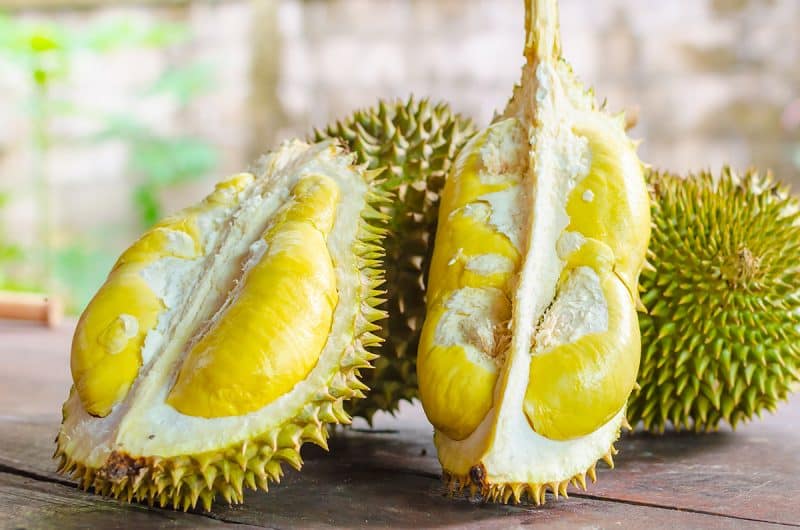
Most traditional farmers of durian do this, but you must retrieve the fruit immediately because it has a short shelf life. Most durian lovers eat the fruit straight away or in the first three to four days after dropping. By day five, the quality drops significantly.
If you don’t like to eat durian, but can grow it, you are onto a good thing. Durian lovers go on tours for the fruit, dedicate social media sites to it, and will travel to buy it.
